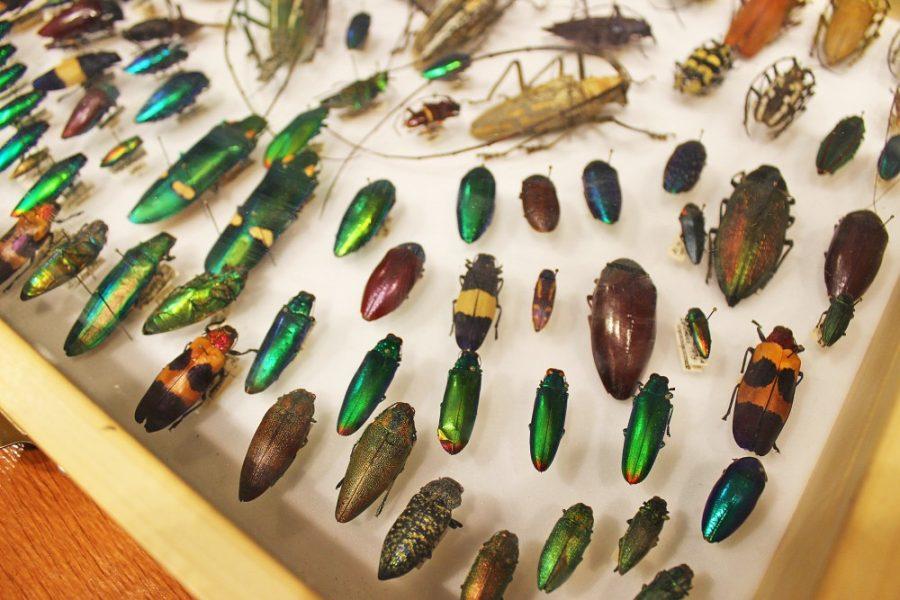Did you know that there are more species of native bees living in Tucson than any other place in the world?
That fun fact was just one of the hundreds shared at the ninth annual Arizona Insect Festival, which took place at the University of Arizona’s ENR2 building on Oct. 20.
According to the festival’s website, the Arizona Insect Festival is “the largest UA event completely designed and run by UA scientists to engage the community in science.”
Every year an emphasis is chosen, with this year highlighting the bee population. In a series of exhibits bundled together as “The Tucson Bee Collaborative,” the displays served to educate the public on southern Arizona’s rich bee diversification.
“If all bees died out, there would be worldwide food shortages and perhaps one-quarter of the human population would starve,” entomologist Laurence Packer was quoted in a handout that circulated at the festival.
RELATED: Q&A: Mosquito prevention is deeper than just repellent
However, bees weren’t the only topic of focus at the festival. Entomology graduate student Joshua Arnbrister had presented on the mosquito-borne diseases in southern Arizona and Sonora.
“This will be my third year doing this [festival]. I love it,” Arnbrister said.
Looking back from the first year that worked at the festival, Arnbrister said that his knowledge on Tucson insects has grown.
“I actually didn’t know anything about Tucson insects [at the first festival],” Arnbrister said. “I was working the local insects booth and all these kids were coming up and telling me what the insects were. It was just really cool to learn [about] the insects that way from them.”
If there’s one thing the volunteers can agree on, it’s the life and energy the children attendees bring to the Arizona Insect Festival. Cameron Villalpando, an undergraduate volunteer majoring in biology, was quick to respond when asked on what stood out about the festival.
“All the kids, honestly,” Villalpando said. “I think it’s great exposing kids to this kind of thing.”
Children at the festival had no shortage of activities at the festival. Outside the entrance, a ring of kids surrounded children’s musician Bruce Phillips as he performed a series of songs to the crowd. Inside, Arnbrister was one of several volunteers running the build-a-bug lab, where kids could re-create bugs out of craft materials like pipe cleaners and Play-Doh.
RELATED: 2017 Arizona Insect Festival covers all that flies, crawls and stings
Upstairs there were more opportunities for kids and adults alike to engage with the bugs directly. This included a “Meet and Pet a Caterpillar” station, as well as a station where you could try a few bugs.
Yes, try as in eating.
Sautéed in a pot with onions and served up on a chip with an optional side of salsa, festivalgoers had the opportunity to sample arthropod larvae, which, according to a sign sitting next to the commercial insect snacks, stated how “in many parts of the world, insects are eaten and comprise an important part of the human diet.”
Running the labs that actually raised the insects in the caterpillar lab as well as the insects that were consumed was Goggy Davidowitz, an associate professor of the Department of Entomology.
“This is our ninth year and I’ve been involved since day one,” Davidowitz said. “We have somewhere around 280 volunteers, a lot of them are undergrads, high school kids and adults that want to help.”
While the festival has been running for nine years, there is no sign that public interest is slowing down.
“This is the largest outreach event that the university does outside of ball games,” Davidowitz said. “We have around 6,000 people come.”
Running only one day for five hours, it may seem that the Arizona Insect Festival has made full use of their time to bring and educate children and adults together in the wonders of entomology.
Follow Claudio Cerrillo on Twitter









